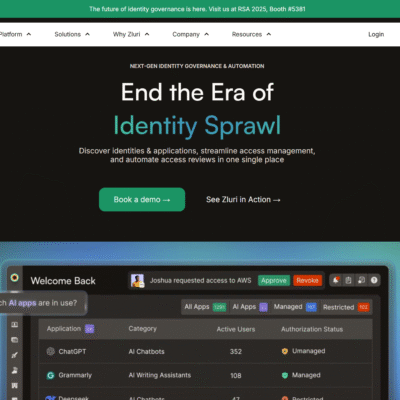The Prominence of AI-Powered Chatbots and the Privacy Challenges They Bring
One of the most notable advancements in artificial intelligence has been the rise of AI-powered chatbots. These sophisticated systems have found their way into various sectors, reshaping how businesses communicate with customers and automate tasks. According to a report by Mordor Intelligence, the global chatbot market is poised for substantial growth, expected to surge from USD 9.3 billion in 2025 to USD 27.07 billion by 2030.
As organizations adopt AI chatbots, they harness a multitude of benefits, including reduced customer support costs and around-the-clock availability. Users engage with these chatbots in a manner that feels increasingly human-like, making for a seamless customer experience. However, this innovation is not without its challenges, particularly regarding user privacy.
Understanding Privacy Concerns
With the integration of AI chatbots into everyday business operations, significant privacy concerns have emerged. Organizations must recognize and address four primary risks associated with AI chatbots: data breaches, unauthorized access, communication interceptions, and user profiling and data misuse.
1. Data Breaches
Chatbots often handle sensitive data, meaning they can be vulnerable to data breaches. Users frequently share confidential information, including medical histories and financial details. For instance, a chatbot may retain:
- Conversation history between the user and the chatbot.
- Banking data, such as transaction histories and credit card numbers.
- Health data relevant to patient interactions.
- Personally identifiable information (PII), like Social Security and passport numbers.
- Business-critical data, including internal documentation and trade secrets.
Cybercriminals recognize the value of this information and target chatbots for data exploitation, potentially devastating an organization’s reputation while compromising user privacy.
2. Unauthorized Access
The complexity of AI chatbots creates various entry points for potential attackers. Key vulnerabilities include:
-
API Exploitation: Many chatbots communicate with external APIs. If these APIs lack proper security measures, attackers can manipulate them to access sensitive information.
-
Session Hijacking: Vulnerabilities in session management can allow attackers to take control of ongoing user sessions, particularly if users are on unsecured networks.
-
Privilege Escalation: Admin dashboards sometimes lack strong access controls. If compromised, an attacker could escalate privileges to access sensitive data.
- Third-party Integration Vulnerabilities: AI chatbots frequently rely on third-party services, and any unprotected integration point can lead to data breaches that affect user privacy.
3. Communication Interception
Chatbots operate over the internet, making them susceptible to security risks such as:
-
Man-in-the-Middle Attacks: On unsecured networks, hackers can intercept communications between a user and a chatbot, potentially accessing sensitive exchanges.
- Network Traffic Analysis: Even when conversations are encrypted, attackers can analyze traffic patterns, leading to possible deductions about user behavior. This intelligence could pave the way for targeted phishing scams.
4. User Profiling and Data Misuse
AI chatbots accumulate vast amounts of data, leading to concerns about misuse. Here’s how:
-
Cross-Platform Tracking: Data collected through chatbots can be aggregated with other services, such as web searches and emails, to create detailed user profiles.
-
Behavioral Pattern Analysis: Chatbots track user interactions over time, turning them into valuable data for profiling, which can then be sold to advertisers.
- Predictive Analytics Abuse: Chatbot data might infer sensitive information about users, raising the risk of discrimination based on health, financial status, or personal preferences.
Most users are often unaware of how companies leverage their data, amplifying the privacy concerns surrounding AI chatbots.
Strategies for Protecting User Privacy
To address these privacy concerns, both users and organizations can take proactive steps.
For Individual Users:
-
Limit Data Sharing: Avoid sharing sensitive information with AI chatbots.
-
Learn About Privacy Terms: Take the time to read the privacy policies associated with chatbots, focusing on data collection practices.
- Claim Your Privacy Rights: Under regulations like the GDPR, users have the right to request access to their stored information and to ask for its deletion.
For Organizations:
-
Data Anonymization Techniques: Organizations should ensure that sensitive information is anonymized, employing methods like data masking and differential privacy.
-
Encryption: Implement strong encryption protocols to safeguard data both in transit and at rest.
-
Strong Access Controls: Utilize robust authentication protocols to restrict access, such as multi-factor authentication and role-based access controls, ensuring that only authorized personnel can access sensitive areas.
- User Consent Management Systems: Establish consent management processes to empower users regarding how their data is used. This could include consent for data storage, third-party sharing, and AI model training.
By implementing these strategies, organizations can enhance privacy protection in AI chatbots, fostering trust and compliance with privacy regulations.
Through a shared commitment to safeguarding privacy, both users and organizations can navigate the exciting, yet complex, landscape of AI chatbots with confidence.





